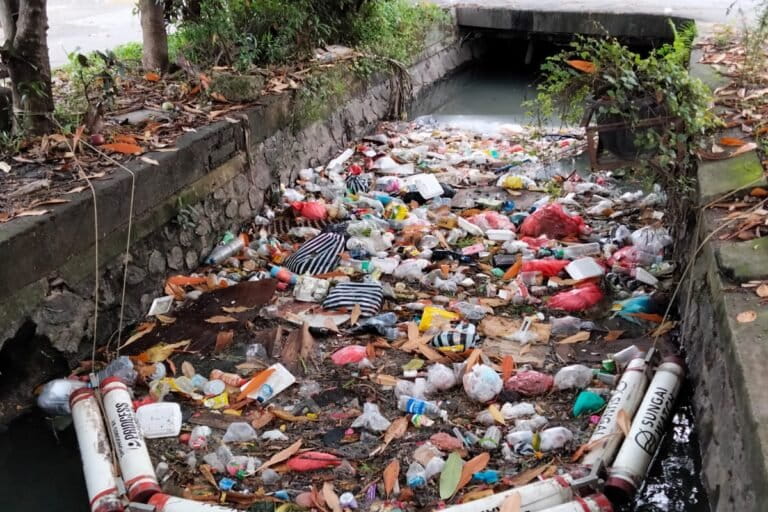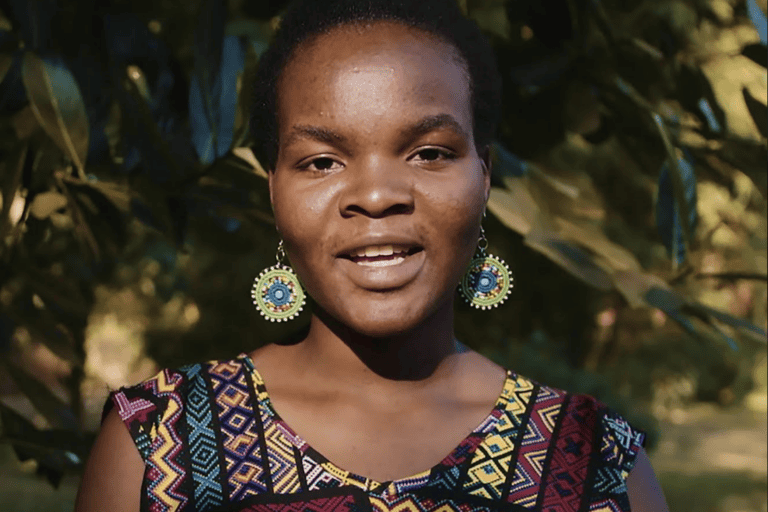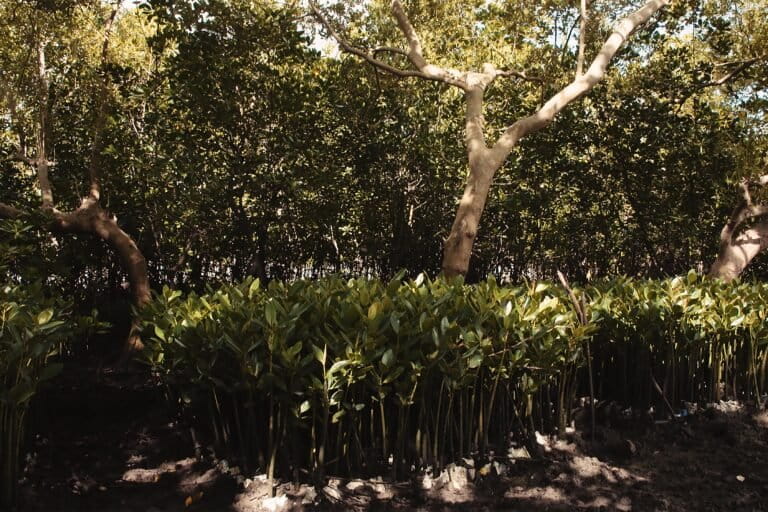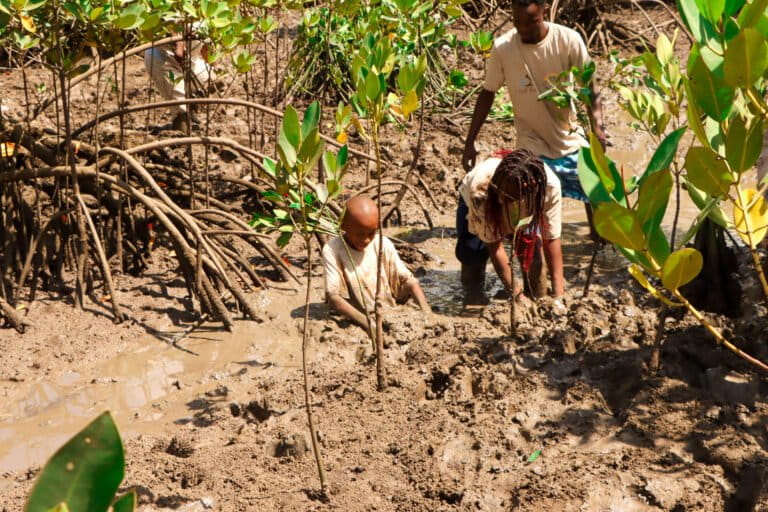- This Saturday is International Youth Day, a day established by the U.N. to draw attention to youth issues worldwide.
- This year celebrates youth developing the “green skills” needed to shift the world into one that is environmentally sustainable and climate-friendly.
- In recognition of the international day, Mongabay spoke with three youths worldwide who initiated successful environmental restoration organizations in their communities.
This Saturday is International Youth Day, established by the U.N. in 1999. With a different theme every year, this year celebrates youth worldwide developing the “green skills” needed to shift the world into one that is environmentally sustainable and climate-friendly.
At the moment, humanity’s use of land and oceans, such as farming and fishing, to logging, mining, and other attempts to pluck natural resources from sensitive ecosystems, has been a driving force in our biodiversity and climate crisis. According to an in-depth assessment by the Intergovernmental Science-Policy Platform on Biodiversity and Ecosystem Services, or IPBES, in 2019, 1 million species of plants and animals face extinction.
However, societies and communities still can veer course to avert our crises and achieve many of our global biodiversity and climate goals, say researchers — and some youth organizations are putting these changes into action instead of waiting on their local governments to act.
In recognition of the international day, Mongabay spoke with three youths worldwide who initiated creating environmental restoration organizations in their communities.
Cleaning polluted rivers of plastic in Indonesia
In Indonesia, the worsening plastic pollution crisis has led Sam Benchegjib to start Sungai Watch – an environmental organization dedicated to keeping Indonesia’s waterways clean by installing river barriers to prevent plastic and other trash from entering the ocean. An average of 2,000 kilograms (4,400 pounds) of plastic waste per week can leak into the ocean from just a single village. Proper management of plastic waste is lacking in coastal communities in the country, the No. 2 contributor to the ocean plastic crisis, pushing the government to vow $1 billion to cut 70% of its marine plastic waste by 2025.

Sungai Watch has successfully cleaned several of Indonesia’s most polluted rivers and revived mangrove ecosystems that have been damaged because of plastic pollution, using a system similar to litter booms. So far, over 1.2 million kilograms (over 2.6 million pounds) of plastic waste has been collected from river systems and bodies of water.
“I grew up in Indonesia and saw that plastic pollution was getting worse and worse throughout the years,” Benchegjib tells Mongabay. “Over the last 20 years, I have seen a terrifying increase in the amount of plastic that is consumed, that washes up on our shores, and that flushes down our beaches.”
With his two siblings, Benchegjib started Sungai Watch, in October 2020. They experienced many setbacks throughout the almost three years of building Sungai Watch, from the technology and equipment used in their barriers to staff shortages to learning how to scale the project. He says they’re still learning new things every day and continually improving our processes.
“I think that’s the beauty of being an entrepreneur and fighting an issue like plastic pollution, where new challenges and variables are always presented to you,” he tells Mongabay. “This has been a true-life school for us.”


Despite these challenges, they have removed over 1.2 million kg ( over 2.6 million pounds) of plastic from Indonesia’s rivers, installed 180 trash barriers throughout Indonesia’s most polluted rivers, and have grown from a team of 3 siblings to 100 people full-time staff helping us on our mission to clean rivers.
“Some of our success stories include seeing fish populations return to what were once extremely polluted waterways, reviving mangrove forests after removing layers and layers of plastic, which were suffocating mangrove trees,” Benchegjib says.
In certain rivers, they had to remove their barriers as they were no longer useful due to the lack of plastic pollution after working upstream with communities on education and raising awareness about properly managing waste at the household level.
Feeling a circular economy in Malawi
In the communities of Chisinga in Malawi, Maria Kameta hopes to tackle the rising deforestation near Kasunga National Park by introducing a clean cooking solution that also improves the health of community members, the Mudzi Cooking Project. Since September 2022, Mudzi has been able to train over a hundred women in the Chisinga location to make and sell over 24,000 recycled fuel briquettes made from used wastepaper, sawdust, agricultural waste, groundnut shells, rice husks, and maize stalks. The briquettes not only save women hours spent collecting firewood in forests every week while risking attacks by wild animals, but the initiative that was adopted across 500 households also improved women’s respiratory health, said Mudzi.
I started this project to address the social and environmental issues that were being faced by communities in Chisinga,” Mudzi tells Mongabay.

These communities relied heavily on wood and charcoal for their domestic energy needs, contributing to deforestation in the region of woodland and bush known for its population of African elephants. In Malawi, only 13% of the population has access to electricity, pushing much of the 87% of the people towards forests for energy.
The traditional stone stoves and wood used for cooking produce a lot of dark gray smoke, irritating respiratory systems and worsening chronic heart and lung diseases. Women tend to be in charge of walking long distances to gather wood for cooking fuel and experience more respiratory diseases.
However, the establishment of the project was not always smooth sailing.
“The project was faced a few setbacks. Firstly, the adoption rate on using briquettes was initially challenging until communities were educated on the project and its benefits,” says Mudzi. “Secondly, we faced challenges when selecting which household would receive the stoves as many community members were eager to have them in their kitchens.”


Mudzi’s stoves use 67% less wood when compared to traditional stoves, based on the data collected. By reducing the use of wood, the project has managed to conserve key woodland for elephants, antelope, zebras, and other wildlife, allowing ecosystems to remain intact.
The efficiency of the stoves also made women eager to adopt them. They are cheap, seamlessly adapt to domestic life and enable households to have two burners simultaneously, reducing the time it takes for households to cook meals. The design of the stoves also ensures heat is not lost, but instead stored and used effectively during cooking times – making food cook faster than traditional stoves, which are usually used in open air and increase the loss of heat.
Preventing floods and erosion in Kenya
For Steve Misati, the key role mangrove forests play in coastal ecosystems, flooding, erosion reduction, and stocking carbon drove his motivation to found Youth Pawa — a nature restoration and ocean conservation organization in Kenya. This motivation grew after he learned the country lost half of its mangrove forests over the last 50 years to a combination of factors, including overexploitation by locals with limited livelihood options. Mangrove forests are often touted as a natural climate solution, sequestering up to four times more carbon than forests on land. Misati actively participates in local climate talks in regional colleges and frequently organizes beach cleanups and mangrove planting projects.
Undertaking this Mangrove Eco-Restoration project came from my profound fascination with the intricate web of life and the benefits of these amazing and unique ecosystems,” Misati tells Mongabay. “Mangrove’s beauty and resilience are quite a catch.”
Mangroves possess diverse benefits and environmental services, from sequestering carbon from the atmosphere, filtering water and preventing soil erosion, and supporting diverse marine life.


“Through this project, I believe we can continue promoting ecological balance, restoring degraded areas, and safeguarding the livelihoods of coastal communities that rely on these ecosystems,” says Misati.
The implementation of this project has not been without its share of setbacks and challenges. One significant obstacle was the need for more awareness and understanding among local communities about the importance of mangroves and their role in coastal ecosystems, shares Misati. Overcoming this challenge required extensive community outreach, awareness campaigns, and education programs to communicate the value of mangrove restoration — many late hours of volunteer work.
“At first, I faced resistance from some community members who relied on traditional practices such as wood fuel production or cutting down mangroves for timber and wood. So, it was essential to build trust, demonstrate alternative livelihood opportunities like beekeeping and ecotourism, and involve key community leaders to address these challenges and foster support for the restoration project,” says Misati.
The project has had a transformative impact on his community and the biodiversity in his local area. He has fostered a sense of ownership and stewardship over the restored mangrove areas by involving the local people as active participants. So far, his organization and community have planted 13,521 mangrove trees, recording a 94% survival rate.


“We do weekly monitoring of the ecosystem,” he says. “Any destroyed mangrove seedlings that were initially planted are restored there and then.”
At the moment, biodiversity in the restored areas is thriving. The restored mangroves have attracted different bird species like the Collared kingfisher and helmet shrikes, butterflies, fish, crustaceans, and other organisms, contributing to the overall richness and diversity of the area.
Banner image: Staff clearing plastic trash gathered from river barriers. Image courtesy of Sam Benchegjib.
Indigenous youths keep ancient forestry traditions alive in the Philippines
FEEDBACK: Use this form to send a message to the author of this post. If you want to post a public comment, you can do that at the bottom of the page.
